The history of the Amsterdam Pipe Museum
Author:
Benedict Goes
Original Title:
De geschiedenis van het Amsterdam Pipe Museum
Publication Year:
2021
Publisher:
Amsterdam Pipe Museum (Stichting Pijpenkabinet)
General
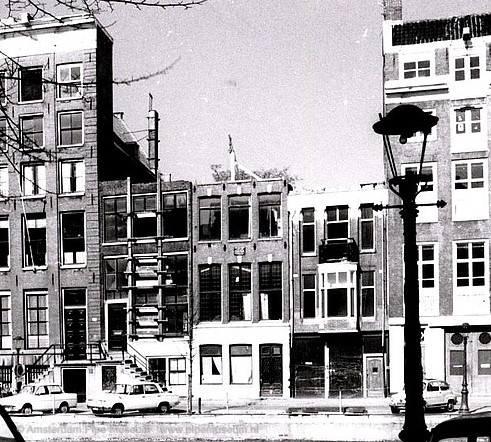
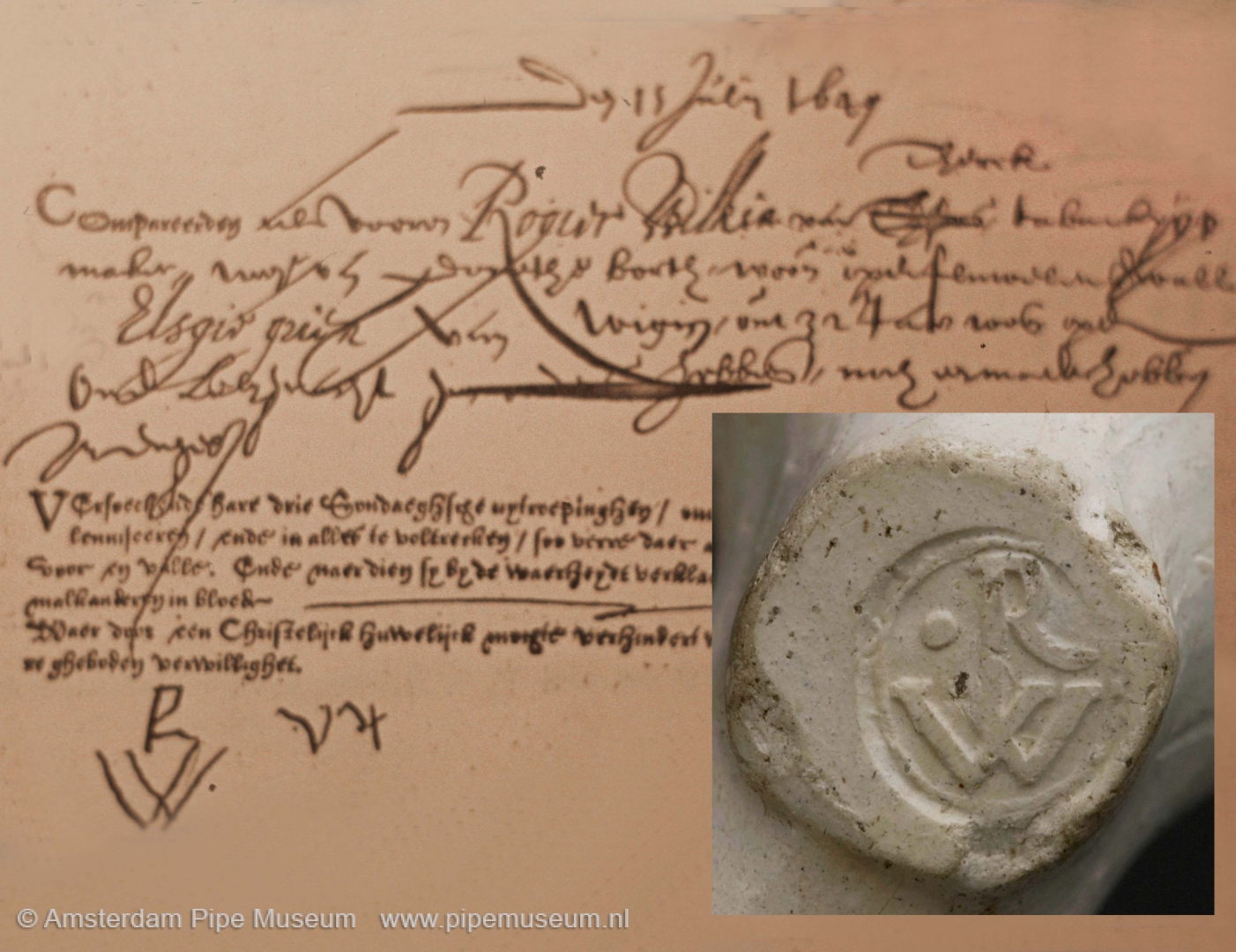
As with so many museum collections, the Amsterdam Pipe Museum arose from the initiative of one person. In the 1960s and 1970s, archaeology had a broad public attention. It is just a coincidence that the interest of the Amsterdam amateur archaeologist Don Duco was drawn to the clay pipe. Thanks to his focus, vigour and endurance, his efforts have grown into the versatile museum that manages his collection fifty years later.
During digging work on the Keizersgracht, one of the main canals in Amsterdam, a large cesspit was found in the late summer of 1969. Filled with pub waste from the first half of the seventeenth century - including clay pipes. Preparing the new Bijlmermeer city district for construction was another stimulus for the collection, as massive earthworks brought to light many historic objects. Curiosity about the origin and age of the pipes found led Duco to the archives. The combination of collecting and research has remained a characteristic of our museum over the years. Bringing together examples of material culture alongside discovering and uncovering the historical background of production, trade and use is a valuable cross-fertilization.
The archaeological material was soon expanded with historical pipes for proper comparison. To gain insight into the production technique, a collection of pipe maker’s tools was assembled. Research and collecting always went hand in hand with these expansions. An overall encyclopaedic collection was created, strongly focussing on inventorying the material: shapes, maker’s marks, decoration. A method typical of the sixties and seventies of the last century.
Exhibition in the Pijpenkamer
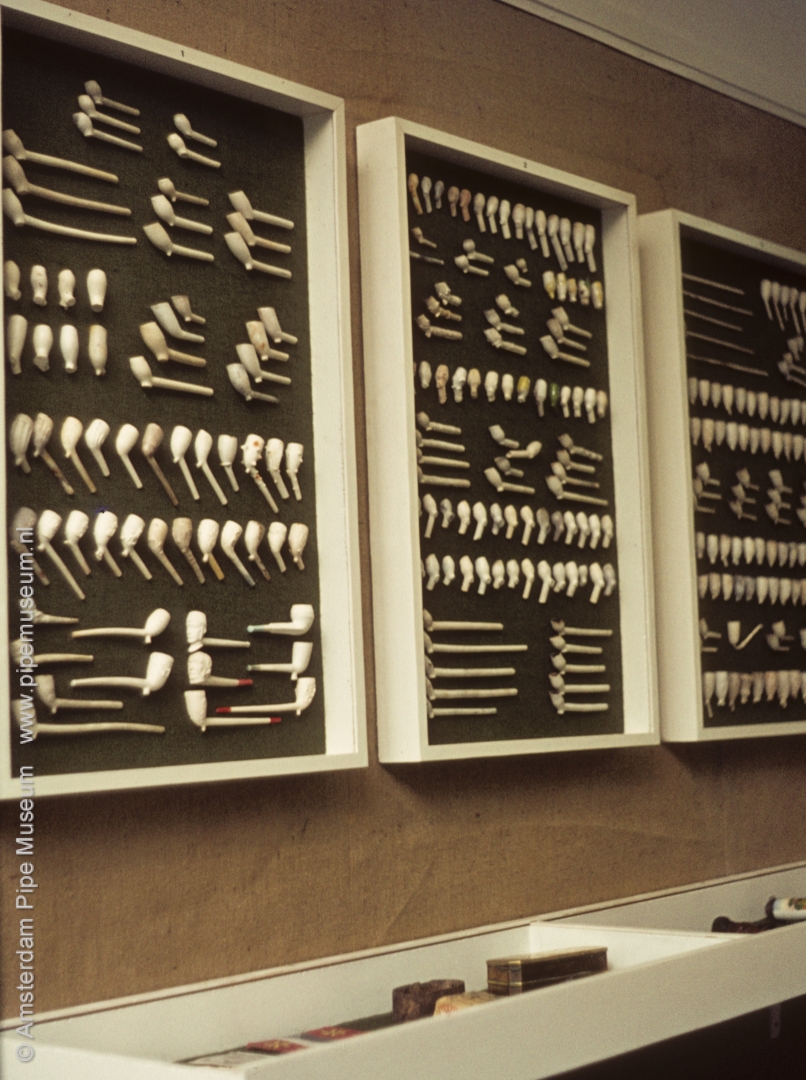
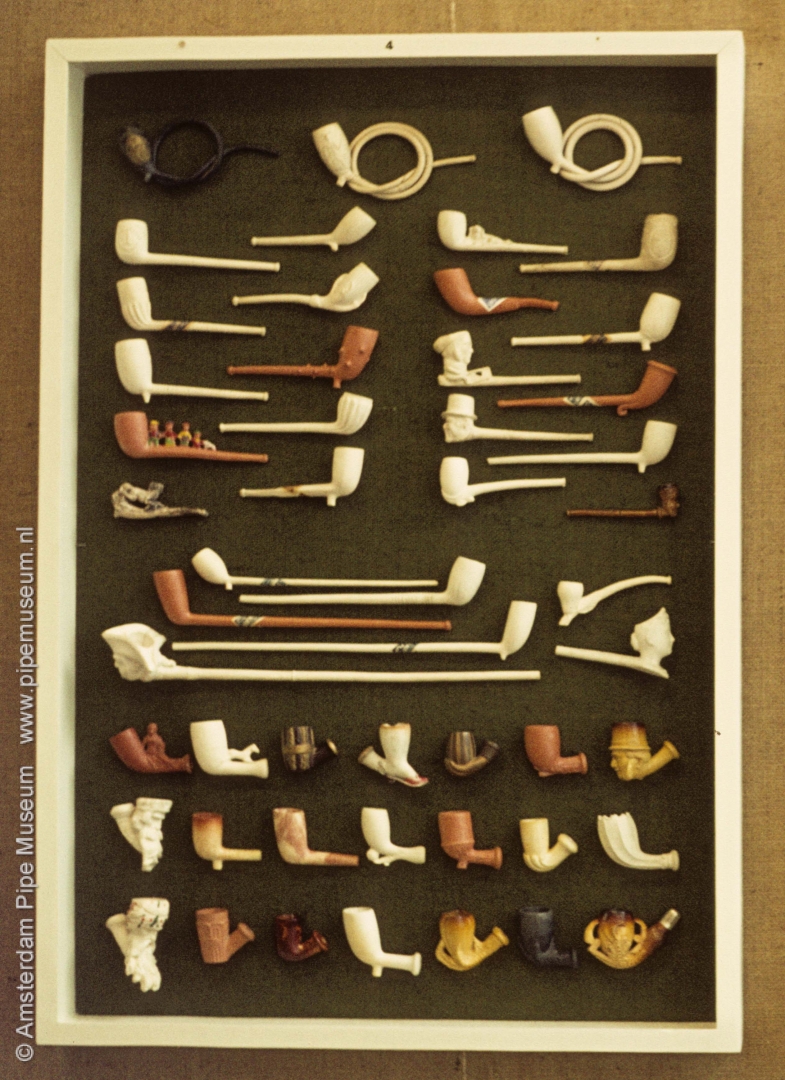
In the back of Gallery Icon at Frederiksplein in Amsterdam, the Pijpenkamer (Pipes Room) opened in June 1975, a permanent exhibition of this private collection of clay pipes. The initiator was Don Duco, collector and researcher in heart and soul. Gallery owner Niels Augustin offered him the opportunity to install the exhibition. In this room, the walls were fitted with six display cases that showed an overview of the clay pipe. Arranged by theme, some four hundred different pipes gave a picture of the richness of shape and decorations of the clay pipe from Western Europe.
In other display cases, the history of smoking was shown with tobacco related objects and other curiosities. One wall was reserved for the pipe making technique. A workbench with a pipe makers’ vice was complemented with its associated tools including drying boards and pipe pots used during the production. Framed prints and photos explained the manufacturing process.
The Pijpenkamer in Gallery Icon was free to visit five days a week. In addition to the exhibition, pipe-making demonstrations were held and visitors could come in for identification of pipes and tobacco curiosities. The exhibition made an important contribution to the interest in the subject. At that time, the Pijpenkamer was considered a leading collection with a wide variety, both in circles of private collectors and in comparison with other museums. The opening of the Pijpenkamer took place shortly after the departure of the Niemeyer Netherlands Tabacological Museum on the Amstel in Amsterdam. This made the Pijpenkamer unique in Western Netherlands.
Collection and research in the first phase
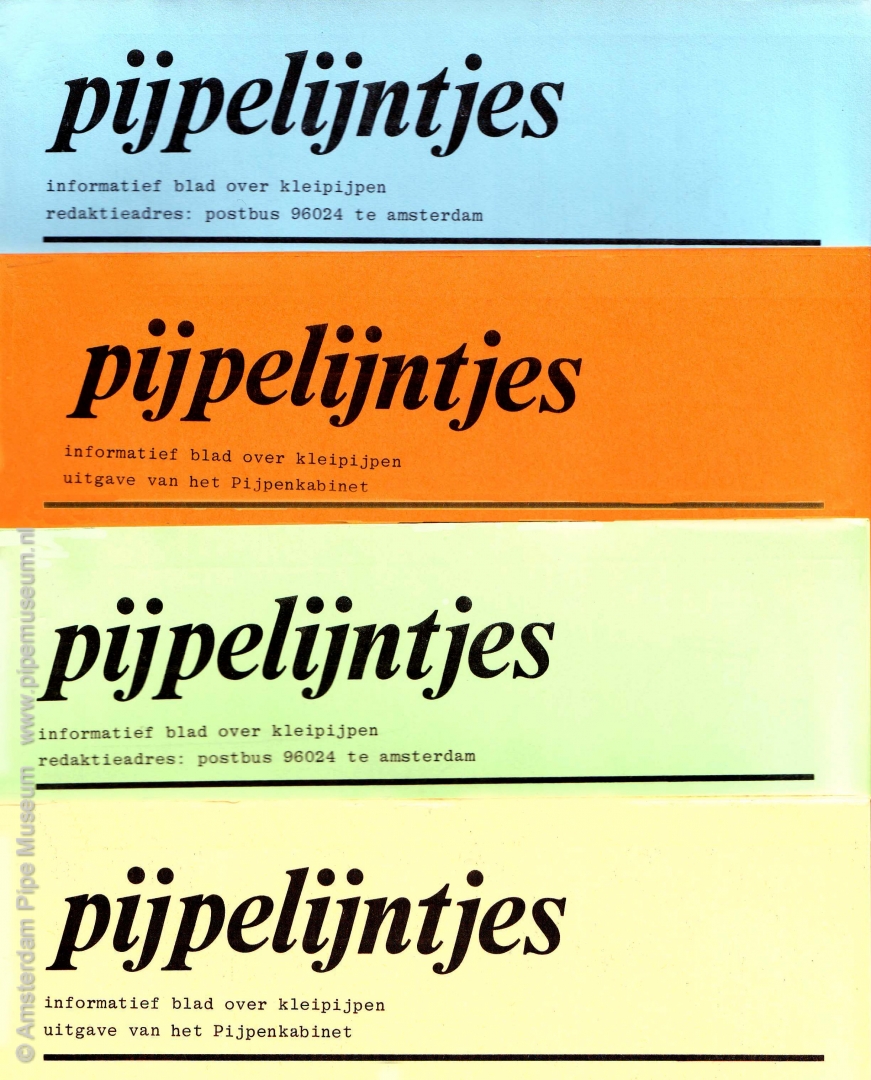
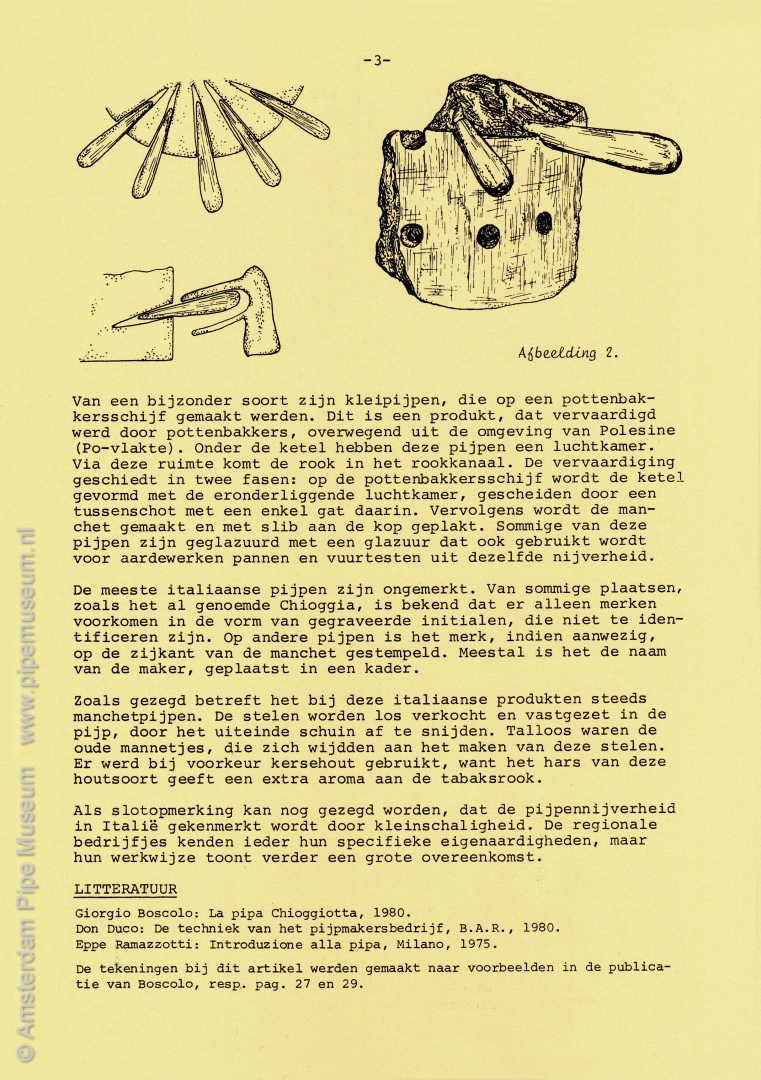
Little was known about clay pipes in the 1970s. The last Dutch book on the history of the pipe was dated 1942, after which only a few general works on tobacco were published. To be honest, our country was no exception, the tobacco pipe had never been the subject of serious study. The first phase of the museum is therefore characterized by an inventory of material and knowledge. A unique initiative, as no museum or archaeological service paid attention to this subject. In addition to acquiring objects, a library was created with books and all conceivable documentation on the subject.
An important stimulus for the research was our own collection, which formed a survey of Dutch clay pipes, according to marks, shapes and decorations. The pipe marks seem to be the key to finding out the maker, but the archives never mention what exactly a pipe maker produced; only his profession is written down. The puzzle to combine marks and makers with substantiated evidence started in this period and would not end until decades later. Dozens of diggers, young and old, contributed to this inventory by showing or donating their finds to the museum. Over the years, the full history of the clay pipe became clear.
The publication of the quarterly magazine Pijpelijntjes, the first specialized periodical about clay pipes in the world, also started in 1975 at the opening of the Pijpenkamer. This quickly grew from a simple newsletter to a magazine with more serious studies on the clay tobacco pipe. Ten volumes were published over ten years with a wide range of articles. The index with thousands of keywords is illustrative for the depth of information, especially considering the period of publication. The magazine has encouraged many collectors to give more background to their hobby.